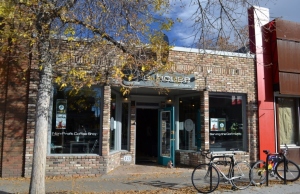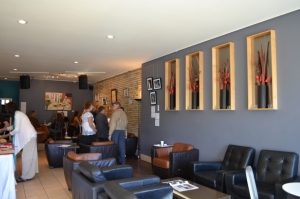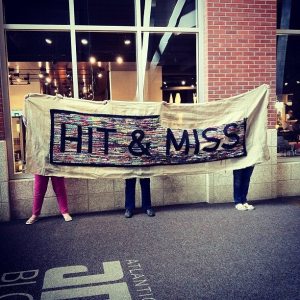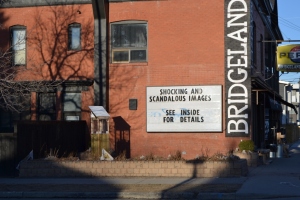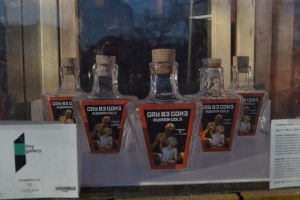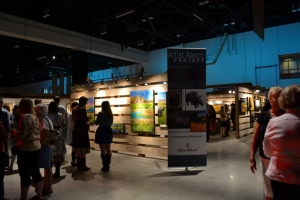
Today is Parade Friday, the official kick-off to the Calgary Stampede.
A couple nights ago, I attended the opening of the sneak preview of the Western Showcase at the Calgary Stampede. It is an annual tradition for me that I missed along with all Stampede related activities, last year due to my working in High River helping those affected by the flood.
Long ago, I was asked to serve on the selection jury for the Sales Salon booths for the 2003 Stampede edition. I remember this only because I a year that I moved my residence during the week of Stampede while working full-time, and was only able to attend one Stampede activity that year. The interesting takeaway from my jury involvement was that it gave me an interesting view into how the Western Showcase Committee operates and how they select their artists for the Sales Salon. This helped explain why many of the sales booths show predictably similar artists year after year with a only a few minor changes along the way. The net result however, is a slow migration that follows what their audience wants – or at least that is the theory.
The Stampede committee has obviously figured out the formula that their patrons are looking for – safe, depictive paintings of livestock and landscapes; realistic sculpture of animals; new aboriginal stone carvings; and safe non-representational painting. There is some interest in expanding this, but this is the core.
There is definitely no interest at all in printmaking. I understand why, but I think it is taking the easy way out. It is a form of artmaking and collecting that involves a fair amount of connoisseurship and discernment, not to mention the education required if one wants to be serious about it. Maybe in time they will eventually see the light, but it will be a while – I have a feeling.
I am uncertain, but I believe that there is only limited interest in photography. I find this rather odd, because there is a large annual Western Photo Gallery and Competition exhibition including photographers from around the world on the other side of the exhibition hall. These are for sale. Outside of this I do not recall seeing any photography in the booths. It is possible that no one has ever applied, which would explain this odd dichotomy. Given all this, it wouldn’t seem like a huge stretch to include photographers in the Sales Booths.
There appears to be a very limited interest in exploring craft as fine art. I also find this interesting and ironic because the Stampede has a very strong craft exhibition component. However, it is traditional craft that is exhibited and awards and ribbons are given for it every year. This is obviously a carry-over from the Stampede’s agricultural fair roots. This component probably was even included in the Calgary agricultural fairs that pre-dated the first modern Stampede in 1912. I want to talk a wee bit more about this later.
* * *
As an aside – I was talking to a random lady who was in the line-up beside me for some BBQ meatballs and veggie rolls at the event. From her I found out that the type of art on display is now described as “western values for her wall.” That had to be one of the funniest comments I heard all night. I had to refrain myself from bursting out laughing, since I had just met her and didn’t know how to take it when she said it.
“Western values” is a nebulous phrase that I keep hearing from both the marketing and media relations department at the Stampede. I have yet to figure out what it actually means, or if it is something akin to “world-class” – an overused and trite comment. Maybe that is what made the lady’s comment so funny. But I digress.
* * *
As usual, the most interesting thing for me is the Artist Ranch Project.
The Artist Ranch Project in a nutshell:
This is the sixth year of the project. I like to think of it as a wee, little, breath of fresh air and sunshine. This project occupies space right in the middle of the generally staid and conservative environment that is the rest of the show.
Each year a number of artists are selected. From the numbers in the last couple years, it would appear as if they have settled on five artists as being the magic number. Once the artists are selected, they spend a weekend on a working ranch.
While there, the artists find out the workings of the ranch and what the staff at the ranch does. Each year it is a different ranch (or at least it has been to date). They go in the fall – after the Stampede has been put to bed for the year and the ranchers are starting to think about bringing in the harvest, if the harvest is part of their operations. From talking to artists that have been involved, they bring various people to talk about what the ranch does and what the people who work there do. They spend a lot of time talking and relatively little amount of time out in the fields.
This makes sense especially from the perspective of someone that has never been on a ranch before. After this visit the artists have the better part of a year to absorb those conversations and develop artwork that relates to their experiences and how it will translate into their practice.
Often the artists selected are in early to middle stages of their careers. It is a great opportunity for the artists. It introduces them to a different audience and it also gently pushes the traditional Stampede art buyer to explore options outside of their own personal comfort zone. For breaking news, scroll to the bottom of this page.
How the Artist Ranch Project fits within the rest of the Western Showcase
In a way I see this Project as a bit of the future direction of the Sales Salon. I suspect that this is seen as being a development and training area of sorts. The parallel being contestants in smaller rodeos who after winning enough competitions finally have the chance to compete for the $1-million rodeo purse at the Stampede.
Periodically some of the artists return the following year with a booth or are included in the annual art auction. This year one of the participants in last year’s Project (Bernadette McCormack) was featured on the invitation for last night’s event. They selected a piece of hers that is included in the Art Auction that will happen next week. I also notice that Karen Scarlett has a booth this year. Similar situations to this have also occurred in years prior.
One of the criticisms of the Artist Ranch Project is that the artists selected are uneven in quality. This is not necessarily a bad thing and in the grand scheme of things is a relatively moot point. Some years the artists selected were (or are) stronger than might be the case in other years, or alternatively with other artists in the same year. This is to be expected in any group exhibition, a result of different stages of career, and a result of selection being based on an application-based process. The strength is in the collective impact, connections and development for all those involved.
From sources I believe are reliable, until now (2014) the artists have been selected through the Committee that is responsible for this project. This next year (2015) they brought in the first external jury members so that it is balanced between external and internal jury members (3 external and 3 internal) to assist in the selection.
The addition of an external jury member(s) that is somehow involved in the art world should be a good thing. It should bring a perspective that may potentially be missing. Having a fresh voice also helps revitalise any process where the possibility of having stagnation and/or navel-gazing occurs. This is an excellent place to have it, just as they have been doing for some time in the sales salon and presumably in the art auction as well.
I mentioned that I want to talk further about craft as fine art in this context.
This iteration has work by Wanda Ellerbeck. Just as the other four artists involved, Ellerbeck has two-dimensional paintings on the wall. She unlike the others, is the only one with three-dimensional work on plinths. It is possible to see some of them in the picture below. These sculptural objects use cement and mixed media and incorporate found materials into them. These works are very strong and I am glad that she included them. I hope that she is able to place a number of them. It would send a message that there are collectors who appreciate non-traditional, craft-based work.
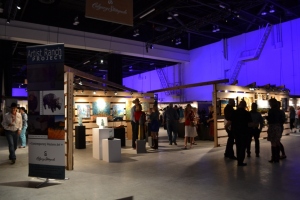
This is a good example of where the Artist Ranch Project has an amazing opportunity to stretch the boundaries of the Western Showcase. This work ties in well with the long craft tradition that I mentioned previously.
In the past they showed some of Philip Bandura’s glass “bombs” (for lack of a better descriptor) with small vignettes including animals inside. I find these works quite fascinating and I am glad to see some have been selected for inclusion in the current Glenbow show of works from the Bee Kingdom.
Tim Belliveau like Philip is a member of the Bee Kingdom. I needed a refresher on what he included as it was so long ago, and I am glad that I met up with him at a Stampede Breakfast so he could refresh my memory. He informed me that he included some glass works and two-dimensional works. He also indicated that a yellow bull glass piece that was exhibited as part of the Ranch Project is also included in the current Bee Kingdom show at the Glenbow.
In 2012 they showed some jewelry by Shona Rae along with her paintings. These pieces of jewelry was a major project that I wrote a letter in support that incorporated things such as bone. It was challenging work that deserved to be shown in a gallery setting. Although I did not attend, last year, they also included Jill Nuckles whom I know from her fibre art that I have seen at the Alberta Craft Council in Edmonton. Whether that was the work she included last year, I don’t know.
Because of the past selections, we can see that amongst the members of the committee there is definitely an awareness of craft-based fine art. It will be interesting to see if craft will be able to crack the Sales Salon in the future.
Maybe, and this is just a brain wave of a thought, an interesting way to do this might be to invite the Alberta Craft Council to work collaboratively with the Stampede. The purpose of this collaboration, would be to set up a curated booth of craft-based work from Alberta artisans. This could be a beneficial collaboration for both organizations. It would benefit the Alberta Craft Council by introducing a diverse selection of top of class artisans and artwork to the Calgary market and the world stage. It would benefit the Stampede by introducing a product with little risk that may satisfy a possible area of artmaking that they may have overlooked in the past with a Western geographical focus.
* * *
Below is a list of the artists involved in the Artist Ranch Project and the ranches that they visited:
2009 (The Calgary Stampede Ranch)
Lisa Brawn
Errol Lee Fullen
Audrey Mabee
Lori Sobkowich
2010 (The A7 Ranch)
Tim Belliveau
Michael Markowsky
Herb Sellin
2011 (The Homeplace Ranch)
Phillip Bandura
Eveline Kolijn
Joanne McDonald
Adele Woolsey
2012 (Bar U Ranch)
Dave Casey
Penny Chase
Jill Hobson
Shona Rae
Adrian Stinson
2013 (Scott Ranch)
Bernadette McCormack
Jill Nuckles
Pascale Ouellet
Karen Scarlett
Tharrie Zietsman
2014 (OH Ranch)
Danielle Bartlette
Wanda Ellerbeck
Sheila Kernan
K. Neil Swanson
David Zimmerman
Breaking News:
Although it has not been officially announced by the Stampede, the results of the 2015 jury deliberations are out on the World Wide Web for anyone to view. I have been aware of the results for approximately one month now. Congratulations to these artists, some of whom I know personally and/or have had professional dealings with in the past.
2015 (Soft announcement was made in early to mid-June 2014)
Billie-Rae Busby
Patti Emerson
Denise Lemaster
Greg Pyra
Carl White
Belinda Fireman (first replacement should one of the selected artists be unable to participate)
